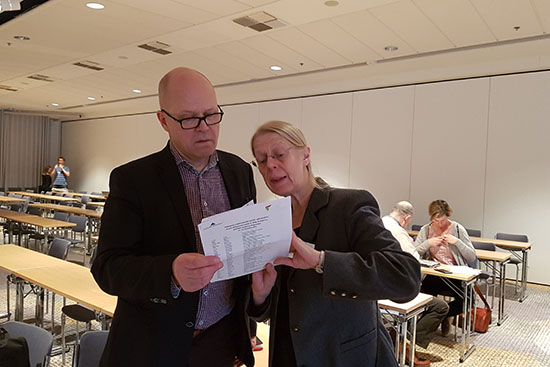Mine projects in Lapland caused controversy already in the 17th century. Understanding history can help us handle today’s conflicts better. The ARKTIKO programme finances research on changes in the Arctic region.
“Many of the themes that we see around mining in Lapland 300 or 400 years ago are still strong in the discussion about mines today”, said professor Vesa-Pekka Herva presenting a research project on the cultural impacts and issues of Lapland mining in ARKTIKO seminar.
The Academy of Finland has granted millions of euros to research on the change factors affecting the Arctic region. The goal of the Arctic Academy Programme ARKTIKO is to contribute to the position of Finnish Arctic research at the top of international rankings, and to promote the identification of novel research paths and new solutions.
ARKTIKO consists of 20 extensive international research projects and two international joint projects. This week, they invited decision-makers and stakeholders to discuss the themes and findings of the projects.
Professor of Archaeology Vesa-Pekka Herva has lead a project called Understanding the Cultural Impacts and Issues of Lapland Mining: A Long-Term Perspective on Sustainable Mining Policies in the North.
“We tend to talk about mining in technological, economic or political terms. Our task was to analyse the historical dimension of industrial mining and its social and cultural impacts. From our point of view, history is essential for understanding the current mining controversies.”
Quarrels usually arise when there are conflicts of interest. A mining company may be interested in some location, but the exact same place may be interesting for tourism. The point of view will eventually decide how the land is used.
“In mining controversies, you can see the shadow of history. The central administration in the south saw Lapland as a source of minerals and other natural resources, without paying attention to what the local population wanted. This is typical colonial mentality”, Vesa-Pekka Herva says.
“In Finland and in the Nordic countries we have not been very good in dealing with our own colonial history. Lapland has been seen and still is sometimes seen as an exotic, backward periphery, and its reserves and resources as something to be exploited, without asking the opinion of the local population.”
When a mine has served its purpose, the companies leave and the local communities have to deal with the abandoned site and the enduring effects on the environment. The historical memory of the local communities reflects in the tensions that arise when new mining projects are introduced.
The researchers have studied the relationships between different interest groups, and the utopias and fantasies related to the mining industry. In the past, mining was considered somehow virtuous.
“Even today, though mining projects are presented as extremely rational, there is an emotional, almost magical undercurrent - the dream of underground treasures”, Vesa-Pekka Herva notes.
According to Vesa-Pekka Herva, current mining legislation in Finland does not hold mining companies accountable for potential damage caused to the environment. The mining companies are outsiders, and even if their actions are not intentionally harmful, their way of seeing Lapland will affect the way they act.
“The key to resolving the controversies lies in respecting the local culture and way of life”, Vesa-Pekka Herva says.
The growing importance of extractive industries is a key driver of economic transition in the Arctic. Another ARKTIKO project Governing Change in Adaptive Fashion towards Sustainable Economy in the Arctic, lead by Research Professor Jukka Similä, is studying ways of reaching a balanced economic development in the Arctic with the help of an adaptive governance of land resources.
Photos: Top of the page: Vesa-Pekka Herva presented their research to stakeholders in ARKTIKO seminar.
Bottom of the page: Professor Juha Lunkka and programme manager Tuula Aarnio discuss the details of the ARKTIKO research seminar programme.
